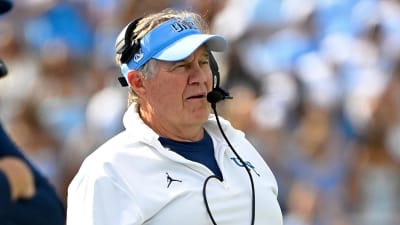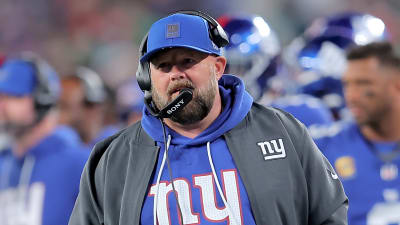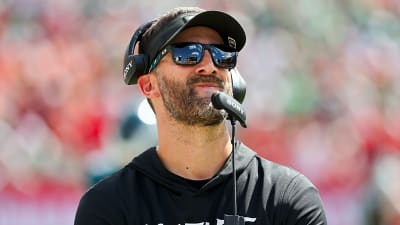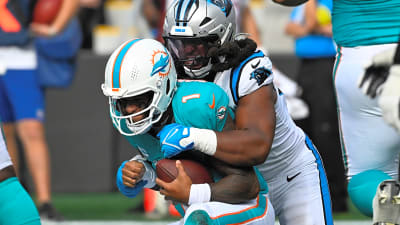
The New York Jets are 0-5, and the search for answers is in full swing. At the center of the storm is quarterback Justin Fields, a dynamic talent acquired to elevate the offense, who is now facing intense scrutiny. One of the most persistent criticisms leveled against him is a familiar one: he holds the ball too long. Despite data from multiple analytics platforms showing he has one of the longest time-to-throw averages in the league, Fields and his coaches are pushing back, creating a complex debate about stats, style, and offensive responsibility.
New York Jets Justin Fields: The Stat and the Story
According to reports from various outlets, including SNY, analytics from Next Gen Stats, TruMedia, and Pro Football Focus all consistently rank Justin Fields as one of the slowest quarterbacks in the NFL from snap to throw. This “time to throw” metric measures the average duration a quarterback holds onto the football before attempting a pass. A longer time can indicate several things: a quarterback waiting for deep routes to develop, a breakdown in pass protection, receivers failing to get open, or a quarterback’s indecisiveness.
For critics, this stat is a smoking gun. It points to a fundamental flaw in Fields’ game—a tendency to hesitate, which leads to sacks, fumbles, and other negative plays that derail offensive drives. It’s a critique that has followed him since his days in Chicago.
Fields Fires Back: “Not a Credible Stat”
When asked about this specific criticism ahead of the Jets’ Week 6 game in London, Fields was direct and dismissive. He not only questioned the validity of the statistic but also explained why he believes it fails to capture the full picture of his style of play.
“I don’t think that’s a credible stat, so to say, if I’m being honest with you,” Fields stated. “My job is to put up as many points on the board, whether that’s the least amount of time to throw or whether that’s the most.”
Fields argued that the time-to-throw metric is inherently skewed against mobile quarterbacks. “I remember one of my years in Chicago, they said I had the longest time to throw too, and at the same time I’m scrambling behind the line of scrimmage, so of course you’re going to count that,” he explained. “Pocket passers are going to have the least time to throw because they scramble the least.”
His point is that when he uses his legs to extend plays and create opportunities outside the pocket, the clock keeps running. Those seconds spent scrambling, in his view, are a feature of his game, not a bug. They are a part of his effort to create explosive plays, even if they inflate his time-to-throw average.
The Coaches’ Corner: A Unified Defense
The Jets’ offensive coaching staff has come to the defense of their quarterback, echoing his sentiment that the statistic is misleading. Offensive coordinator Tanner Engstrand supported Fields, explaining that the team’s offensive philosophy contributes to the longer drop-backs.
“I think he is getting rid of the ball at the time in which the play is telling him to get rid of the ball,” Engstrand said. “If we’re trying to push the ball down the field on a play-action pass… that is going to take a little bit longer as opposed to throwing the quick game.”
Engstrand directly addressed the core issue, stating, “Is he sitting back there and just hanging onto the ball in the pocket in drop-back pass? I really don’t believe he is.” Like Fields, he believes the quarterback’s mobility is a factor. “He is correct with the guys that can utilize their legs as a weapon, it is going to increase the time to throw at times,” Engstrand concluded.
This unified front from the coaches and quarterback suggests a deliberate offensive strategy. They are willing to accept a longer time-to-throw average as a trade-off for creating bigger plays downfield, either through the air or with Fields’ legs.
The Unavoidable Consequences
While Fields and his coaches make a valid point about the context of the stat, it’s impossible to ignore the negative consequences that have come with Justin Fields holding the ball too long. The New York Jets’ offense has been plagued by drive-killing sacks and negative plays, many of which are a direct result of plays breaking down after an extended period.
Holding the ball longer puts immense pressure on the offensive line to maintain their blocks. Even the best offensive lines in the NFL can’t protect a quarterback indefinitely. The longer Fields stays in the pocket, the higher the probability that a defender will break through and create pressure. This has led to numerous sacks that have taken the Jets out of field goal range or created unmanageable third-and-long situations.
Furthermore, while scrambling can lead to explosive plays, it also increases the risk of fumbles and injuries. Every additional hit a quarterback takes is a risk, and the Jets can ill-afford to lose Fields, especially given the team’s winless record.
A Question of Balance
The debate over Justin Fields’ time to throw isn’t just about a single statistic; it’s about a fundamental question of offensive philosophy. Is it better to get the ball out quickly to avoid negative plays, or is it worth the risk of holding onto it for the chance to create something special?
Statistically, Fields has been efficient in other areas. Through the first five weeks, he had not thrown an interception and posted a career-high completion percentage (67%) and quarterback rating (100.1). He also leads all quarterbacks in rushing yards per game. These numbers support the argument that when he does throw or run, he is effective.
However, the team’s 0-5 record speaks for itself. The offense, despite flashes of brilliance, has lacked consistency. The high-risk, high-reward style of holding the ball for extended periods has resulted in too many drive-killing plays.
Conclusion: Finding the Middle Ground
Justin Fields is right to be skeptical of a single statistic defining his performance. His ability to extend plays is a unique and valuable weapon. However, the recurring issue of sacks and negative plays cannot be ignored. The solution likely lies in finding a better balance.
For the New York Jets to start winning games, the offense needs to become more disciplined and efficient. This may require Fields to trust his initial reads more often, get the ball out of his hands on schedule, and learn to throw the ball away when a play isn’t there. It doesn’t mean he has to abandon his scrambling ability, but he must be more selective about when to use it.
The narrative around Justin Fields holding the ball too long will only disappear when the results on the field change. Until the Jets can prove they can sustain drives and avoid catastrophic negative plays, this will remain a central point of criticism for a talented quarterback on a team desperate for a win.
More must-reads:
- Chiefs QB Patrick Mahomes reaches career milestone vs. Lions
- Mike McDaniel addresses Tua Tagovailoa’s controversial comments
- The 'Most starts by an NFL quarterback' quiz
Breaking News
Trending News
Customize Your Newsletter
 +
+
Get the latest news and rumors, customized to your favorite sports and teams. Emailed daily. Always free!








